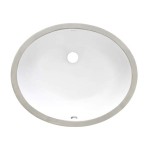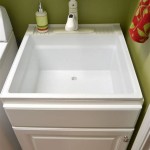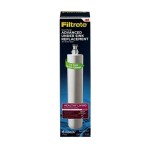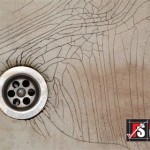The Enduring Appeal of the Old Farmhouse Sink With Drainboard
The farmhouse sink, also known as an apron-front sink, has experienced a resurgence in popularity. Among the variations of this iconic sink design, the old farmhouse sink with drainboard holds a particularly special place. Its historical significance, practical design, and aesthetic charm make it a desirable addition to kitchens seeking a blend of functionality and vintage appeal. This article delves into the features, benefits, and considerations surrounding the selection and installation of an old farmhouse sink with drainboard.
Farmhouse sinks, in general, are characterized by their exposed front, or apron, which extends down from the countertop. This design feature not only provides a distinctive aesthetic but also offers ergonomic advantages. The apron reduces the reach required to access the sink, potentially alleviating strain on the back and shoulders. The addition of a drainboard, typically integrated on one or both sides of the sink basin, enhances the sink's utility by providing a dedicated space for drying dishes, vegetables, and other kitchen items. Old farmhouse sinks with drainboards often exhibit unique characteristics shaped by the period in which they were manufactured, adding to their individual appeal.
Historical Significance and Design Evolution
The history of the farmhouse sink is intertwined with the evolution of domestic life. Prior to modern plumbing, sinks were often freestanding structures, primarily used for washing clothes and other household tasks. As indoor plumbing became more common, sinks were integrated into kitchen counters, but their basic function remained largely unchanged. The drainboard emerged as a practical solution for air-drying dishes in an era before dishwashers were commonplace. Early examples of farmhouse sinks with drainboards were often crafted from materials such as cast iron, porcelain, or soapstone, reflecting the readily available resources and manufacturing techniques of the time.
Designs evolved over time, with variations in basin size, drainboard configuration, and decorative details. Some sinks featured elaborate embellishments, while others prioritized simplicity and functionality. The size and configuration of the drainboard varied depending on the intended use and the available space in the kitchen. Larger drainboards were typically preferred in households with a high volume of dishwashing, while smaller drainboards were suitable for occasional use. The materials used also influenced the design and durability of the sink. Cast iron sinks, known for their robustness, were often coated with porcelain enamel for a smooth, sanitary surface. Soapstone sinks, valued for their natural beauty and heat resistance, were less common but offered a distinctive aesthetic.
The aesthetic of old farmhouse sinks often reflects the architectural styles prevalent during their manufacture. Sinks from the Victorian era might feature intricate detailing, while those from the mid-century modern period tend to have cleaner lines and a more minimalist design. Identifying the age and origin of an old farmhouse sink can provide valuable insights into its history and construction. Factors such as the markings on the sink, the style of the faucet holes, and the presence of any unique features can help to determine its approximate age and manufacturer. Consulting with antique experts or reference materials can further aid in the identification process.
Material Considerations for Old Farmhouse Sinks
The materials used in the construction of an old farmhouse sink are crucial factors in determining its durability, maintenance requirements, and aesthetic appeal. Common materials include cast iron, fireclay, and soapstone, each with its own set of advantages and disadvantages. Understanding the properties of these materials is essential for making an informed decision when selecting an old farmhouse sink.
Cast Iron: Cast iron sinks are known for their exceptional strength and ability to withstand heavy use. They are typically coated with a layer of porcelain enamel, which provides a smooth, non-porous surface that is resistant to stains and scratches. However, porcelain enamel can chip or crack if exposed to extreme temperatures or impact. Regular cleaning with non-abrasive cleaners is recommended to maintain the finish and prevent staining. Cast iron sinks are heavy and require adequate support during installation.
Fireclay: Fireclay sinks are made from a type of ceramic clay that is fired at extremely high temperatures, resulting in a durable and non-porous material. Fireclay is resistant to stains, scratches, and heat, making it a practical choice for a busy kitchen. While fireclay is generally more resistant to chipping than porcelain enamel, it is still important to avoid dropping heavy objects into the sink. Cleaning with mild detergents and soft cloths is typically sufficient to maintain the finish. Fireclay sinks can be lighter than cast iron sinks, but they still require careful handling during installation.
Soapstone: Soapstone is a natural stone that is known for its heat resistance, stain resistance, and unique appearance. It has a soft, smooth texture and a natural patina that develops over time. Soapstone is relatively resistant to scratches, but it can be prone to chipping or denting if exposed to sharp objects. Regular application of mineral oil can help to protect the surface and enhance its natural color. Soapstone sinks are typically heavier than fireclay sinks but lighter than cast iron sinks. They require specialized installation due to their weight and the need for proper sealing.
Practical Benefits and Design Integration
Beyond their aesthetic appeal, old farmhouse sinks with drainboards offer several practical benefits that contribute to their enduring popularity. The large basin and integrated drainboard provide ample space for washing and drying dishes, making kitchen tasks more efficient. The ergonomic design of the apron-front sink can also reduce strain on the back and shoulders. Integrating an old farmhouse sink into a modern kitchen design requires careful planning and consideration of the surrounding elements.
The generous size of the farmhouse sink basin is particularly useful for washing large pots and pans that may not fit easily in a standard sink. The drainboard provides a convenient place to dry dishes without cluttering the countertop. This is especially helpful in kitchens with limited counter space. The apron-front design of the farmhouse sink allows it to be installed at a comfortable height, reducing the need to lean over while washing dishes. This can be a significant benefit for individuals with back problems or other physical limitations.
Integrating an old farmhouse sink into a modern kitchen design can create a striking contrast and add a touch of vintage charm. The sink can be paired with modern countertops, cabinetry, and appliances to create a cohesive and stylish look. When selecting a faucet for an old farmhouse sink, it is important to consider the style and finish of the sink. A bridge faucet or a gooseneck faucet can complement the traditional aesthetic of the sink. The surrounding countertops should be chosen to complement the sink and provide a durable and functional work surface. Materials such as granite, quartz, or butcher block can be used to create a visually appealing and practical kitchen design. The choice of cabinetry can also influence the overall look and feel of the kitchen. Traditional-style cabinets with raised panel doors can enhance the vintage charm of the farmhouse sink, while modern cabinets with sleek lines can create a more contemporary aesthetic.
Furthermore, the drainboard can be utilized for purposes beyond just drying dishes. It can function as a preparation surface for rinsing vegetables, draining pasta, or even cooling baked goods. Strategically placing the sink near a window can maximize natural light and create a pleasant workspace. The presence of a drainboard also implicitly encourages a more organized and efficient workflow in the kitchen, as items are naturally segregated for washing, rinsing, and drying.
In conclusion, the old farmhouse sink with drainboard offers a compelling combination of historical significance, practical functionality, and aesthetic appeal. Its enduring popularity stems from its ability to blend seamlessly into a variety of kitchen designs while providing a highly functional workspace. The considerations involved in selecting the right material, understanding its design constraints, and properly integrating it into the kitchen space are all essential for ensuring its longevity and continued enjoyment.

The Search For A Vintage Farmhouse Sink Wildfire Interiors

The Story Of My 100 Year Old Antique Cast Iron Drainboard Sink And A Collaboration With Kingston Brass We Lived Happily Ever After

Single Bowl Farmhouse Sink With Double Drainboards Model Sbdw5424

Historic Houseparts Inc Antique Kitchen Sinks 52 American Standard White Cast Iron Enameled Farmhouse Sink With Left Drainboard And Backsplash Circa 1920

Where To Find A Vintage Style Farmhouse Sink Hello

42 X 20 Single Bowl Right Drainboard Farmhouse Sink Reion Model Sbw4220 Etsy

The Perfect Farmhouse Sink

Vintage Cast Iron Farmhouse Double Drainboard Sink Country Kitchen Nz

Atlas Farmhouse Sink With Drain Board Rejuvenation

Where To Find A Vintage Style Farmhouse Sink Hello







